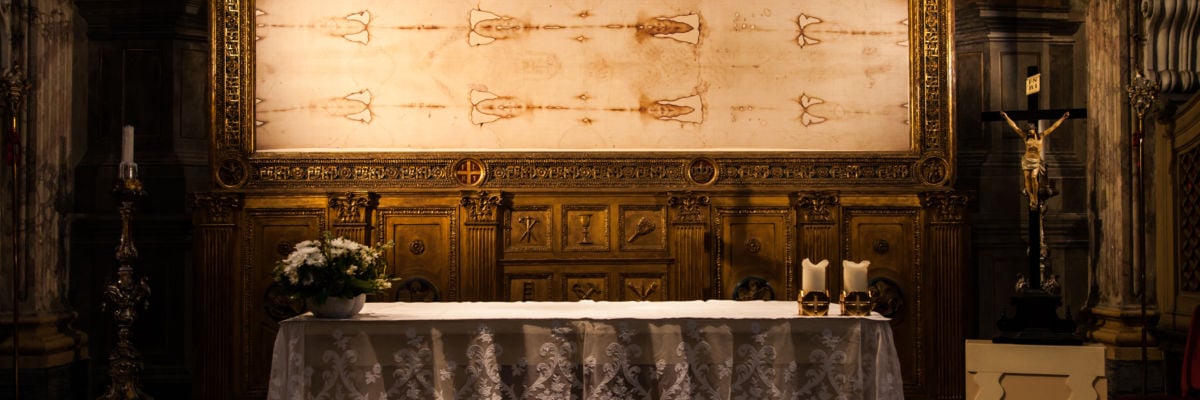
The Shroud of Turin is the most studied icon in the history of humankind. For over a hundred years, the Shroud has been scrutinized by every scientific discipline.
The Shroud is a linen cloth showing the front and back of a naked man who was tortured, crucified, and humiliated. The cloth also holds human blood, sweat, bodily fluids, and mucus. Science has proven that this image is not a painting, drawing, or scorch. The image creates three-dimensional data when evaluated in a VP-8 scanner. No human-made artwork can do that. And after decades of study and evaluation, modern-day science cannot reproduce the image with all the same attributes. Full disclosure of all the facts, evidence, theories, details, and probabilities for the linen burial cloth of Jesus, known as the Shroud of Turin, continues to be a monumental task.
I have been following the Shroud of Turin since I was fourteen years old. As an environmental and Shroud scientist, I remember when I first saw the photograph of Jesus’ face. The event occurred about two years after my family moved to Long Island, when I went from Catholic school to a public school. I quickly realized that my new friends had different faiths or no faith at all. Science classes and the Apollo space program sparked my interest. Then I started questioning the existence of God, because many scientists did not believe in a God. Nevertheless, I did my homework by researching all faiths and philosophies, which caused my mother to worry that I would lose my faith.
It was during this period of questioning that I looked up Jesus Christ in the encyclopedia. Starting from the last page of the section, each page presented an artist’s rendering—paintings and sculptures—of what Jesus may have looked like. When I saw the image on the first page, I froze. I felt the hair on the back of my neck stand up, and I became acutely aware of how insignificant I was in our universe. I said to myself, “How am I looking at a photograph of Jesus?”
I was looking at the first successful black-and-white photograph of the Shroud of Turin.
The photograph was taken by Secondo Pia in 1898, Italy. The detailed positive image of Jesus’ face was visible in that photograph, because the faint image on the cloth was already a negative, like film exposed in an analogue camera. Thus, when developed, we had a positive detailed image. No human-made art can accomplish that feat.
I set out to search for any and all data on the Shroud of Turin—a task not easily done, since this was before the scientific team (STURP) went to Italy in 1978 to study the Shroud. Despite not knowing where this path would lead me, I followed faithfully.
After bringing elements from environmental science into the Shroud of Turin’s equation with my thesis, I obtained certification from Rome’s university of Science and Faith, the Pontifical Atheneum Regina Apostolorum, and OTHONIA, the International Center of Sindonology of Torino. Today, I am an assistant to the director of OTHONIA’s Shroud Apostolate Group, English (SAGE). SAGE consists of the United States, Canada, Mexico, and the Philippines. I oversee and conduct presentations in the Northeast United States.
Most experts, including myself, assert that the authenticity of the Shroud can no longer be disputed. All the theories claiming the Shroud to be a forgery have been disproven. Even an infamous 1988 carbon dating test has been re-tracked by the same scientific journal that originally published the results. There are dozens of individual pieces of evidence and new age-testing methods, such as the Wide Angle Scattering X-ray test (WAXS), that show that the Shroud is 2,000 years old.
Currently, new AI-generated images of how Jesus may have looked are circulating throughout social media and the news. These images are being created from the Shroud’s black-and-white photo of Jesus’ face. The key word is “may.” Like the pages in the encyclopedia I viewed when I was fourteen, each AI-generated image is a rendering created by software based on more accurate digital mapping of Christ’s features as offered by the Shroud. So these images offer us yet another version, with color.
Although the faithful may not need the Shroud, the story the Shroud tells needs to be heard. When I speak on the Shroud of Turin, I see the facial expressions on the people I am talking to, and that is what tells me I have to continue on the path that was shown to me all those years ago.
With my own research, I applied what I learned about “everything being connected” as an environmental scientist. In order to have a complete picture of the Shroud, I’ve used data from my field of environmental studies to include information from multiple other disciplines of study for the purpose of presenting more solidified data that respond to events reported to have happened on the day Jesus was crucified.
By incorporating historical and current weather physics, we can now insert new data into the equation of when Jesus died. We have relative temperature conditions on the ground; location and phases for the sun and moon as per NASA’s data, considering the changes in Earth’s axis, which match pre-recorded prophecies; and accounts of recorded conditions that took place at the time of the crucifixion. We have accounts, such as what was documented by the Gospels and secular historians. And we now have geological research that cites historical earthquake parameters and new data derived from archeologists studying geological formations in newly exposed layers of the Dead Sea, which provide documentation that is extremely relevant to deciphering the when.
Throughout the years, many skeptics ask what is so special about the Shroud. People wonder why this cloth captures the imagination and the conscience. The Shroud holds the truth for many . . . and a fear of accountability for others.
If this truth is different from what you believe, do not create a tempest in your heart, mind, or soul. Rather, open them so that you may know the constant undeniable truth given to us. This is a life-enriching truth that no human should fear coming to terms with. The image of Jesus on his shroud was his last miracle, done 2,000 years ago for us to discover today with our modern technology.



